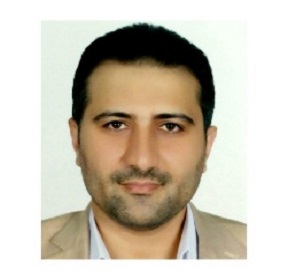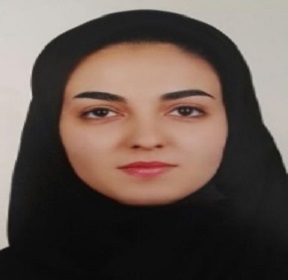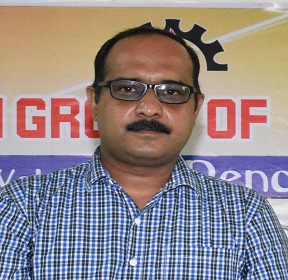Keynote Forum
Abolfazl Khalkhali
Iran University of Science and Technology IranTitle: Stiffness optimization study on the frame of an electric motorcycle
Abstract:
One of the most important components of electric motorcycles is the frame, which requires strength to hold the weight of the motorcycle and has been designed to best support ergonomics feathers. Various components of the motorcycle are attached to its frame body. The frame of the electric motorcycle was loaded due to the weight of the passenger, the weight of the motorcycle components, the unevenness of the road and during braking and acceleration. Stiffness is very important objective in the designing a motorcycle frame. Experimental analysis of structure’s stiffness of vehicles is very costly and time- consuming, so finite element methods can be used to simulate structure’s stiffness tests. In this study, the frame of an electric motorcycle is modeled in Catia and meshed in hypermesh, and then in ABAQUS, the properties of the material and the interactions between the components are defined. In vertical, longitudinal, lateral, and torsional positions, loading is performed on the frame. In the vertical position, the steering shaft and bracket of the fixed shock absorber and vertical force that applied to the passenger seat, in the longitudinal and lateral position, the engine connection brackets are fixed and the longitudinal and lateral loads are applied to the steering shaft column, and in the torsional position, the engine connection bracket is Fix and a coupled force applied to the steering column. In each test, the frame stiffness is calculated by the amount of displacement in each type of load. In the experimental test, the frame of the electric motorcycle vertical loading and its force- displacement results were similar to the results derived by ABAQUS. In this simulation, three levels for four design variables are used for the Taguchi experiment. To define Taguchi design variables, the components were divided into four parts: lower rail, side members, steering column, and reinforcing members. For each, the thickness varies in three levels of 2, 2.5, and 3 mm. The Taguchi method suggests performing 9 experiments. With four modes of stiffness, modal analysis, and weight of frames in equal coefficient mode, frame and optimal weight and stiffness are found.
Biography:
Abolfazl Khalkhali received his M.Sc. (Eng.) in Mechanical Engineering in 2005 and the Ph.D. degree in Applied Mechanical Engineering in 2010 from The University of Guilan, Iran. He was faculty member at Engineering Department of the Islamic Azad University, East Tehran Branch from 2007 to 2011. He has served as the Head of Mechanical Engineering Department and also Dean of Engineering Department at the Islamic Azad University, East Tehran Branch. He came to the Iran University of Science and Technology (IUST) in 2011. He is currently associate professor at the School of Automotive Engineering in IUST. He was Deputy of Chancellor in Research and Education of the School of Automotive Engineering in IUST from 2011 to 2015. He is also the head of Automotive Simulation and Optimal Design research laboratory in IUST. His research interests are automotive body structural design, finite element analysis and simulation, multi-objective optimization, productfamily and platform design, GMDH-type neural networks, robust and reliability-based design and optimization using evolutionary algorithms.
Speakers
Mahsa Rahimbeigi
Iran University of Science and Technology IranTitle: Optimizing the vehicle’s tire material for improving the vehicle handling attributes
Abstract:
The tire characteristics are significantly effective on the vehicle dynamic attributes including ride and handling. The relation between the tire structure and compounds with the vehicle handling and stability is an important relation that can be very effective in the vehicle performance. The purpose of this study is to optimize the vehicle handling considering the tire constitutive material as design variables. The importance of this issue is significant from several perspectives such as reducing environmental pollution caused by tire consumption, increasing economic efficiency in the field of supply of tire raw materials, keeping the occupants safe while driving and some improvement in car fuel consumption. Achieving such important goals requires accurate models to compute forces and torques on the tire, as well as interactions. In this research, first the finite element tire model was created in the commercial software Abaqus. Then, using this finite element model, the coefficients of the Fiala model as a mathematical model of the tire were extracted. Next, the complete model of the car was created in the Adams software and the tire coefficients of the Fiala model obtained in the previous section was used in this complete model. To perform the dynamic test of the vehicle, Step Steer manoeuvre according to ISO 7401 standard was used. Finally, from the combination of Abaqus model and Adams model and using Taguchi optimization method and considering the roll and yaw angle rates, the tire components were optimized. As a result, a tire that structural materials were different from the original model was obtained, which improved the vehicle handling behaviour with this tire.
Biography:
Mahsa Rahimbeigi was graduated in bachelor of Automotive Engineering in 2017 and later in master of Applied Mechanical Engineering in 2021 from The Iran University of science and technology. She startet her career in 2017 as an industrial engineer in Bon Ghete Company up to 2019.She is currently working in Neev Company as an expert engineer. It should be mention that Neev is a company that its main activity is in production of oil and gas equipment.in Neev Company, She is responsible for issuing engineering certificates .She is also a member of Automotive Simulation and Optimal Design research laboratory in IUST. Her research interests are elastomeric compounds, experimental investigations and research about tires. She is really interested in learning new industrial and automotive designing soft wares for improving its operation.
Praveen Kumar Malik
Lovely Professional University IndiaTitle: Analysis and design of fractal antenna for efficient communication network in vehicular model
Abstract:
Vehicular communication plays a dominant role in providing better safety and security with high rate of data communication in next generation networking infrastructure, and one of the prominent areas for research as well. This article reveals a comprehensive review and design of vehicular communication antenna and its impact with the help efficient archives for efficient solutions. Article also provides some of the critical features communication and its impact on vehicular communication for mobile ad-hoc network. As the technology is advancing towards higher frequencies, in-turn demands a better performing antenna which provides more energy-efficient networking for smart vehicular communication environments. We have provided a design of antenna which could be used for frequencies ranging from 10GHz to 15GHz, and the performance of the antenna measured in the form of Return losses, Voltage Standing Wave Ratio, and Gain. Literature also provides the importance of selecting the substrate for designing the antenna for real-time systems. Three different substrate materials are used in the paper, which are FR4_epoxy, Rogers RT/Duroid 5880tm, and Rogers RO4003. Eventually, the design made ready with altering/recessed ground, and its impact on the performance of the antenna for all the three different substrates is depicted which could be used for vehicle networks. The size of the patch selected as 40mm X 30 mm with an impedance of 50Ω and a lumped port is used to provide the feed.
Biography:
Praveen Malik is a Professor in the School of Electronics and Electrical Engineering, Lovely Professional University, Phagwara, Punjab, India. He received his Ph.D. in with a specialization in Wireless Communication and Antenna Design. He has authored or coauthored more than 40 technical research papers published in leading journals and conferences from the IEEE, Elsevier, Springer, Wiley, etc. Some of his research findings are published in top-cited journals. He has also published three edited/authored books with International Publishers. He has guided many students leading to M.E./M.Tech and guiding students leading to Ph.D. He is an Associate Editor of different Journals. His current interest includes Microstrip Antenna Design, MIMO, Vehicular Communication, and IoT. He was invited as Guest Editors/Editorial Board Members of many International Journals, invited for keynote Speaker in many International Conferences held in Asia and invited as Program Chair, Publications Chair, Publicity Chair, and Session Chair in many International Conferences. He has been granted two design patents and a few are in pipelines.



